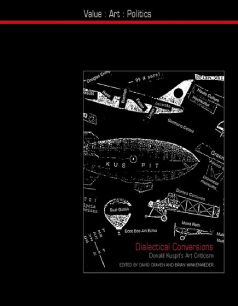
In Conversation with Donald Kuspit,
David Craven y Brian Winkenweder (eds.). Dialectical Conversions: Donald Kuspit’s Art Criticism
ew art critics in Western art history have ever had the broad-ranging impact over several decades of Donald Kuspit, a philosopher and psychoanalyst who from 1970 until the present has been a commanding figure on the international stage. A student of German thinker Theodor Adorno under whom he earned the first of his three doctorates, Kuspit introduced a new type of philosophical art criticism into the art world. He drew on both phenomenology and Critical Theory before he then increasingly adopted psychoanalysis. Since Kuspit himself has always measured his own place in the history of art criticism by how rigorously he engages with competing approaches, this book is a searching survey of Kuspit’s role in triggering several historic shifts within art criticism, beginning with his now legendary 1974 article in Artforum, “A Phenomenological Approach to Artistic Intention.” Dense and demanding, yet deft and incisive, Kuspit’s multi-faceted art criticism has become world famous for reasons that artists, critics, art historians, and philosophers from at least ten different nations explain from various points of view. Divided into three parts and introduced by a lengthy introduction, the book features comments by recognized artists like Rudolf Baranik, Anselm Kiefer, and April Gornik, as well as critical commentaries by many scholars and critics from around the world on the richness of Kuspit’s insights into art. Value: Art: Politics, 5 First edition Pages: 276 Illustrations: 10 black and white illustrations 220 x 175 mm © 2011 Hardback £70.00 ISBN: 9781846314797 Jan 2011 Paperback £16.99 ISBN: 9781846318115 Mar 2012